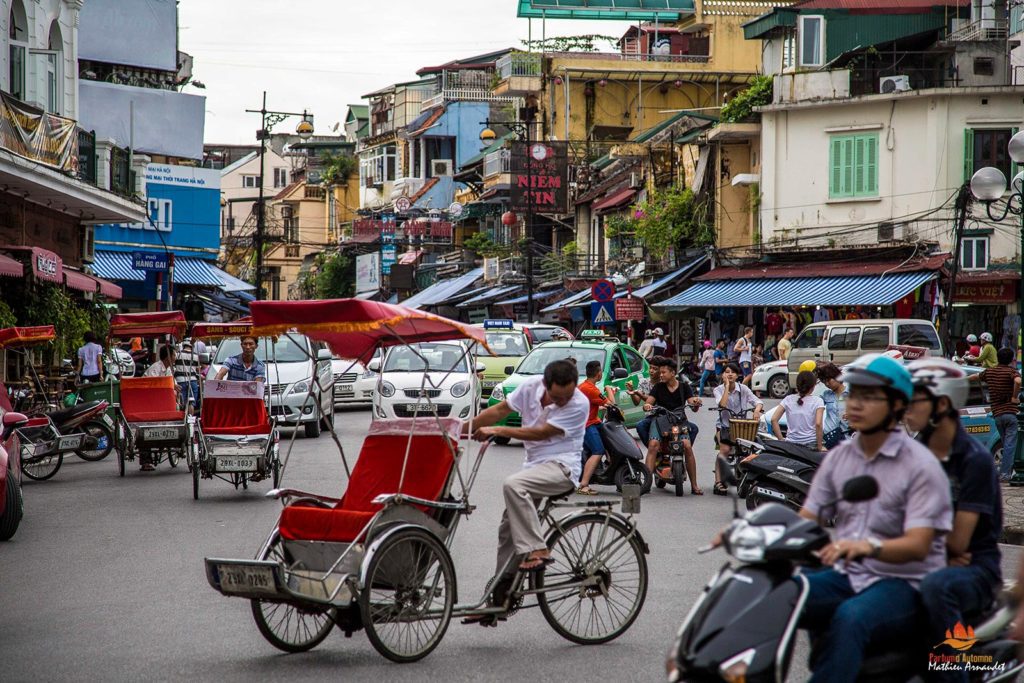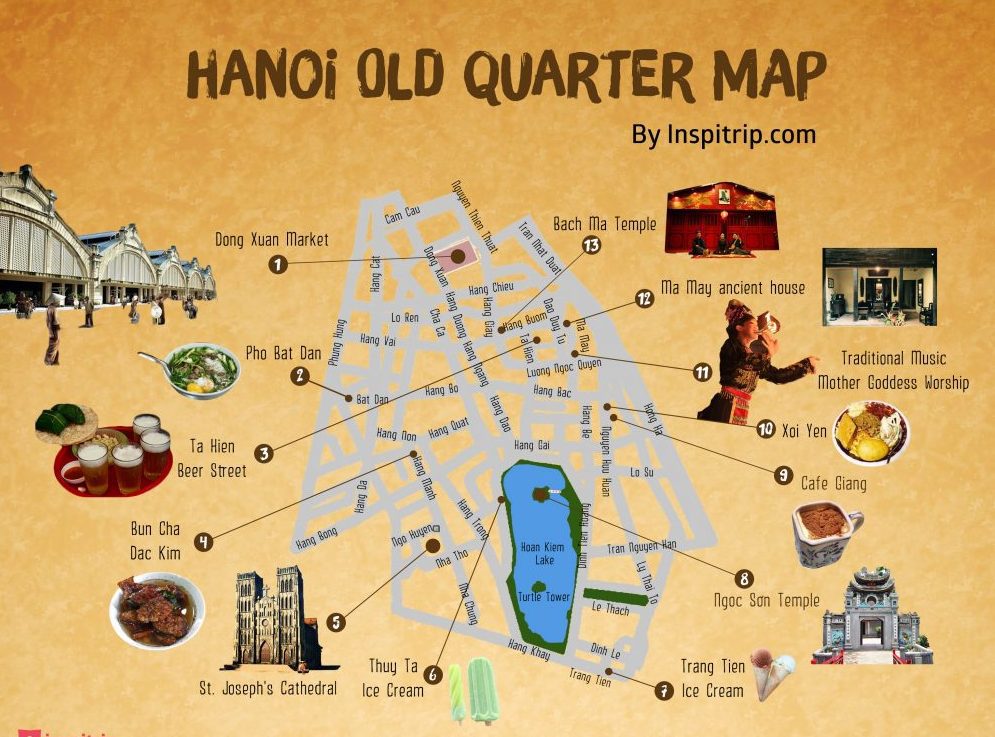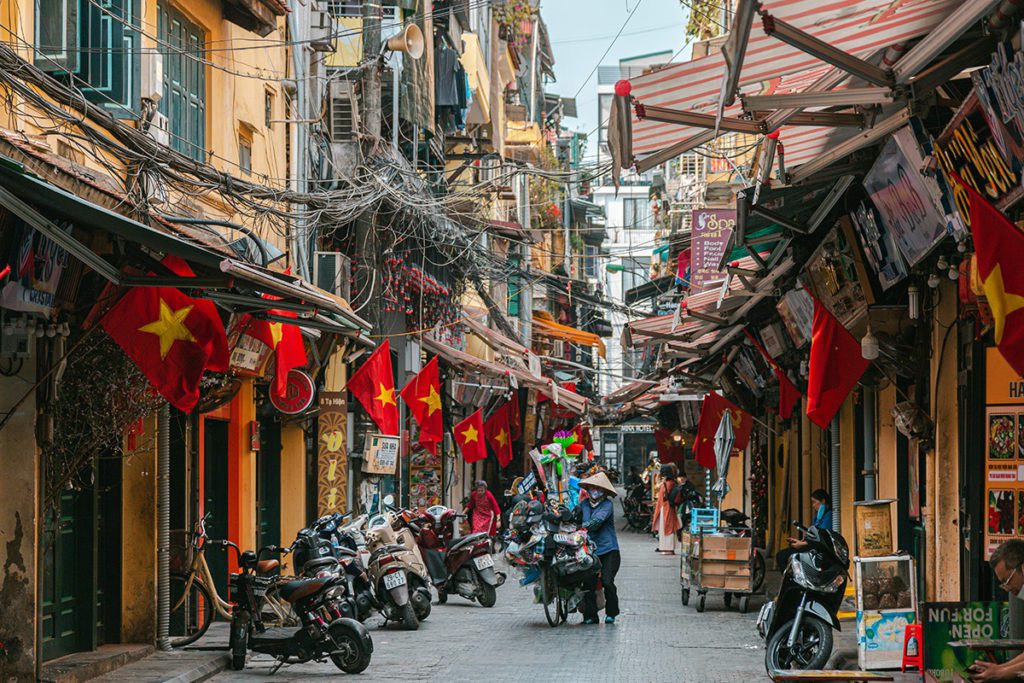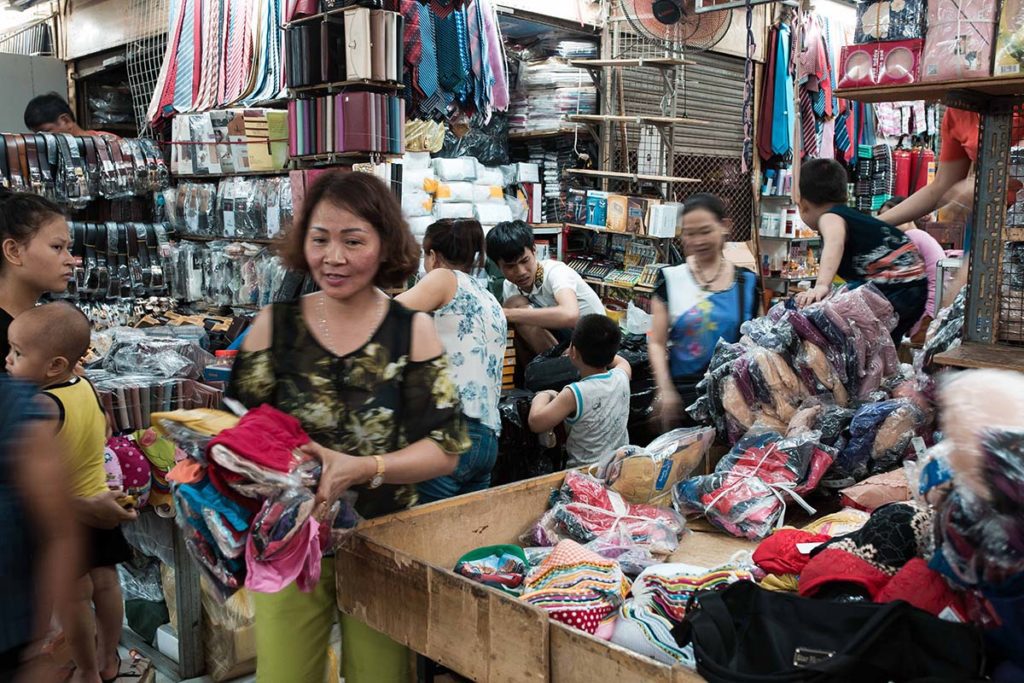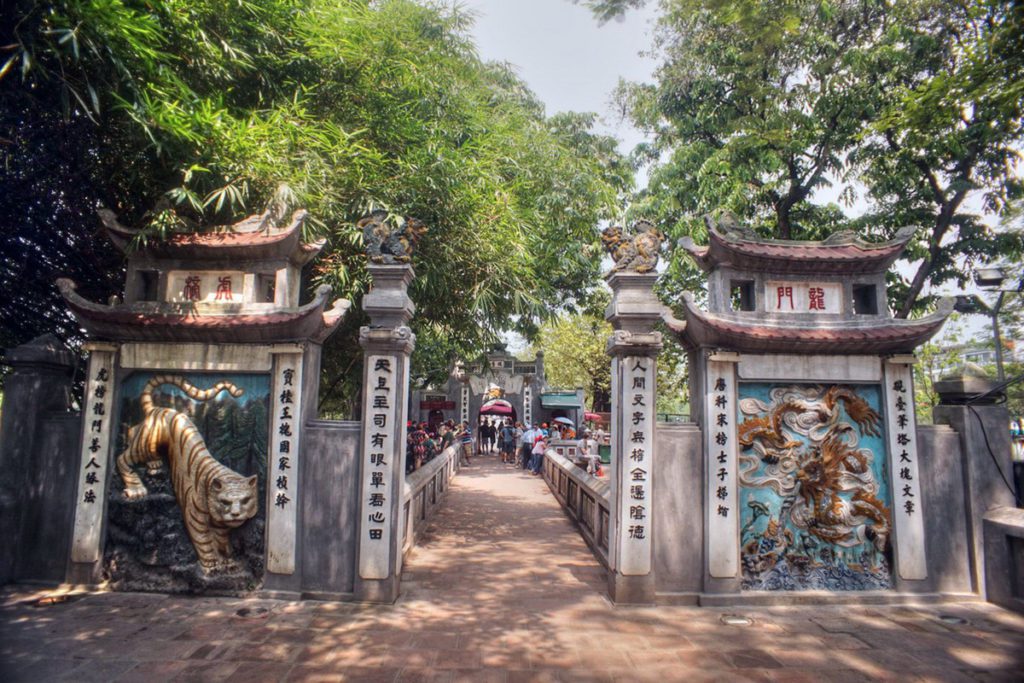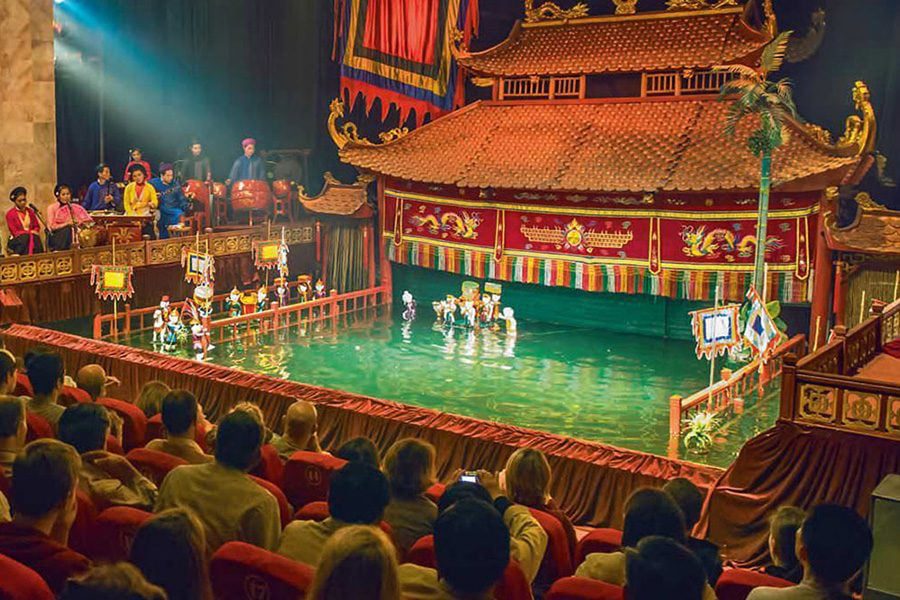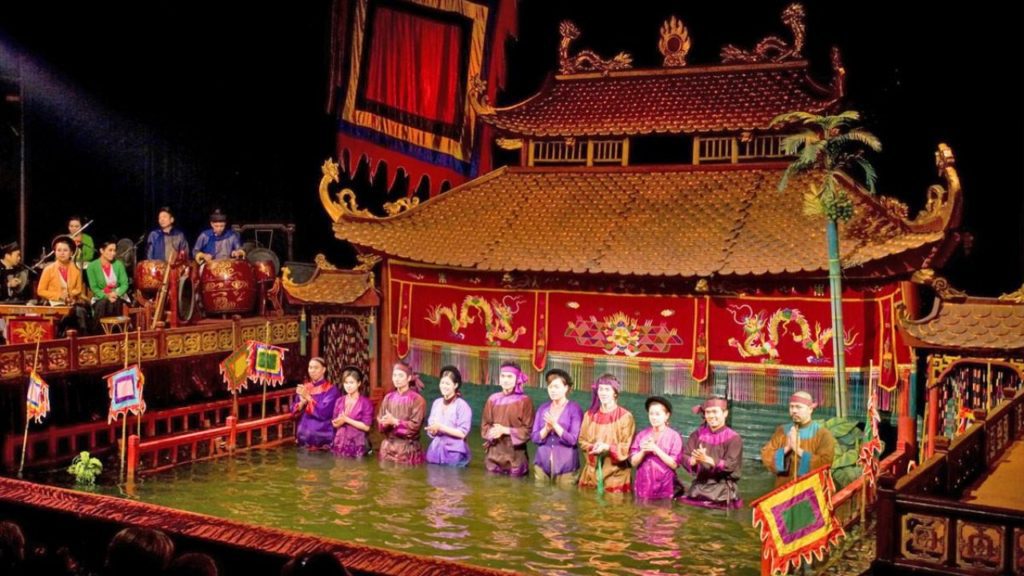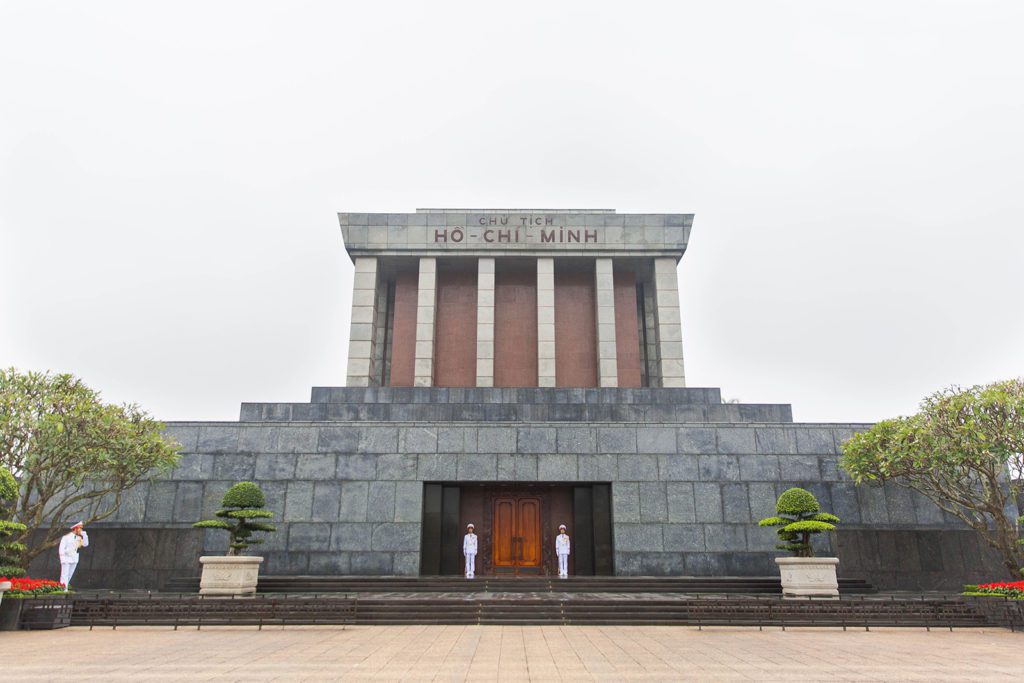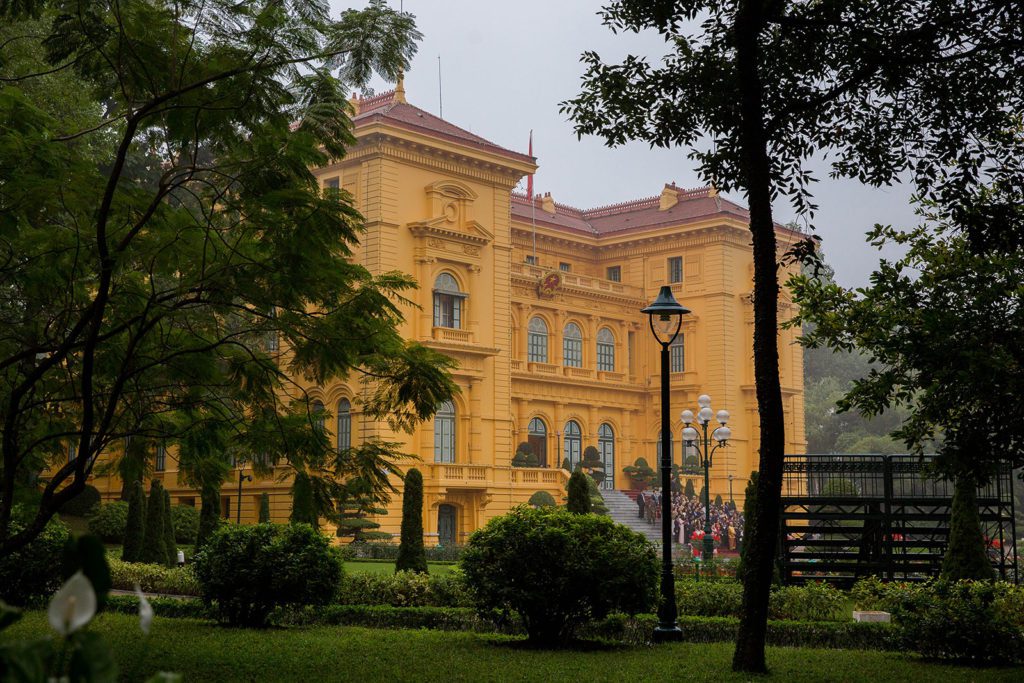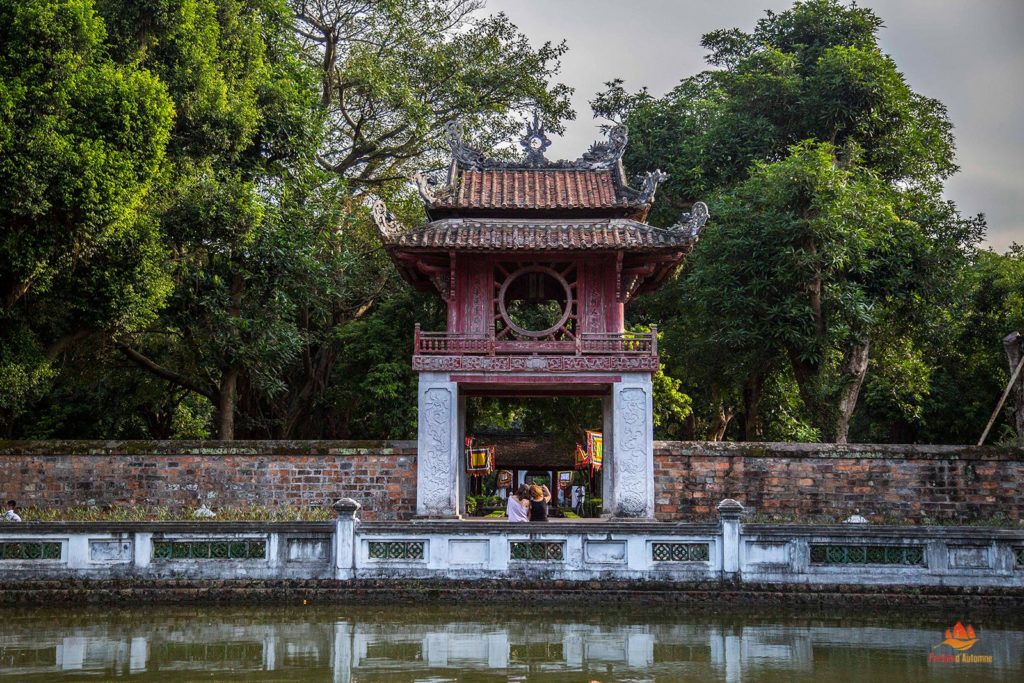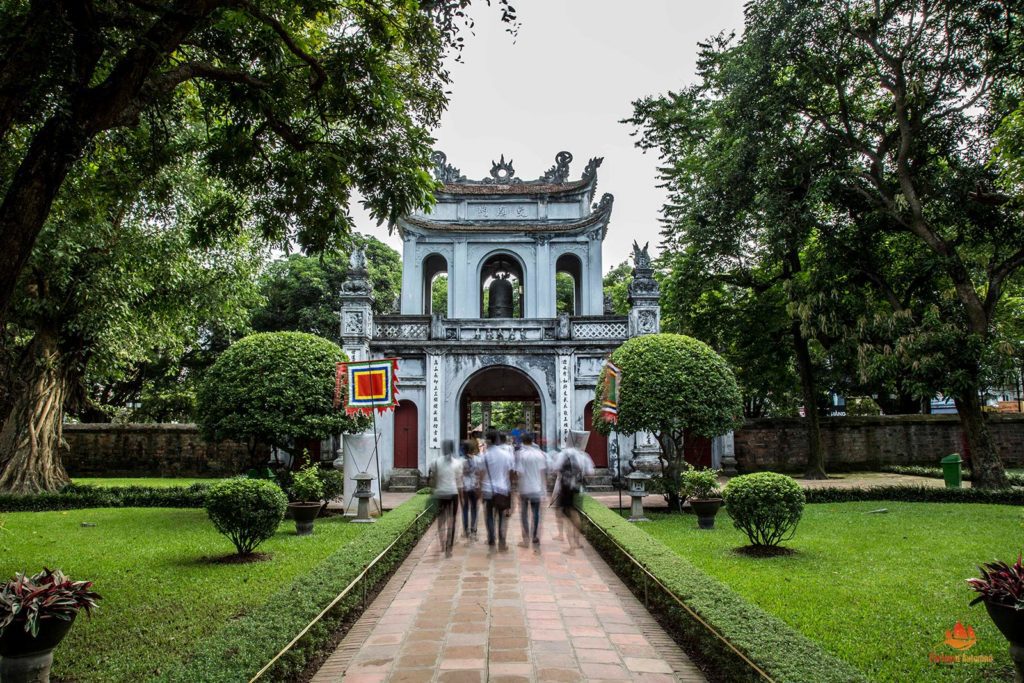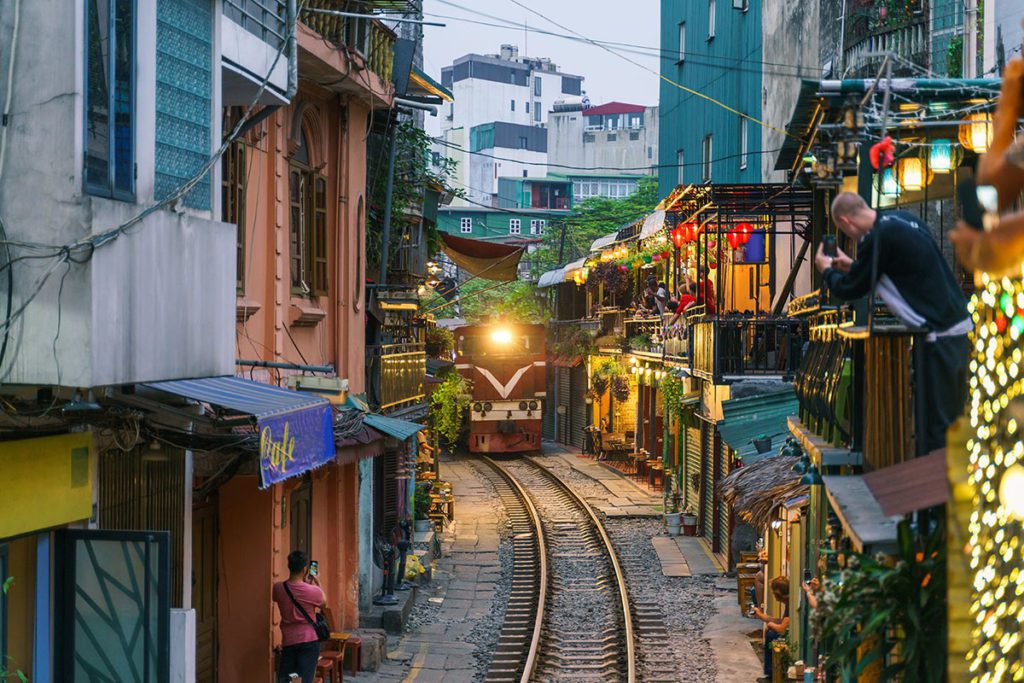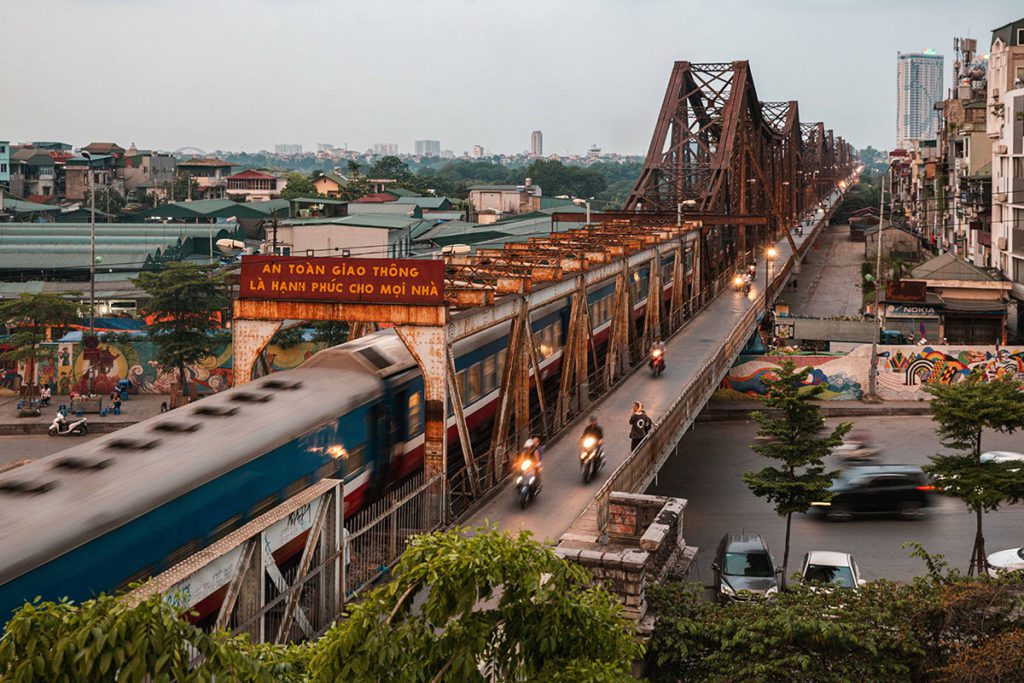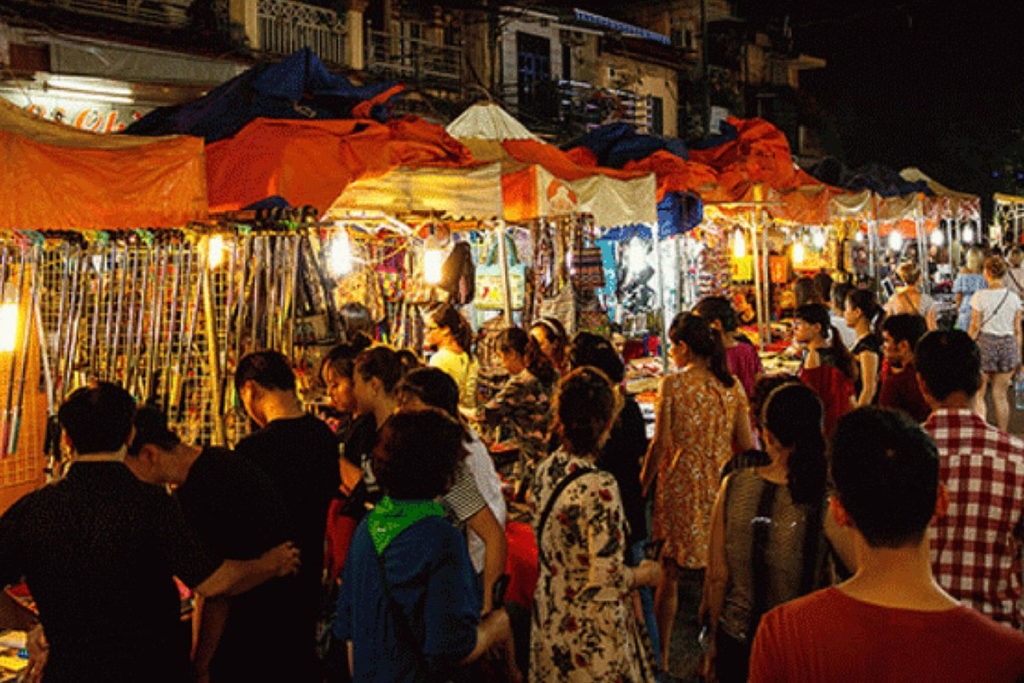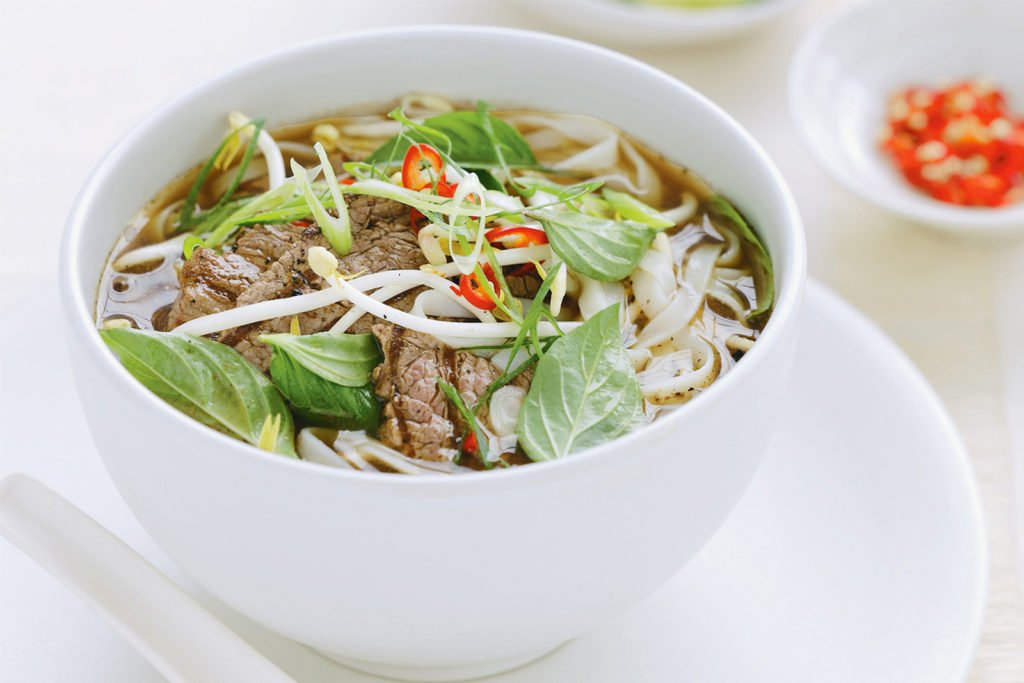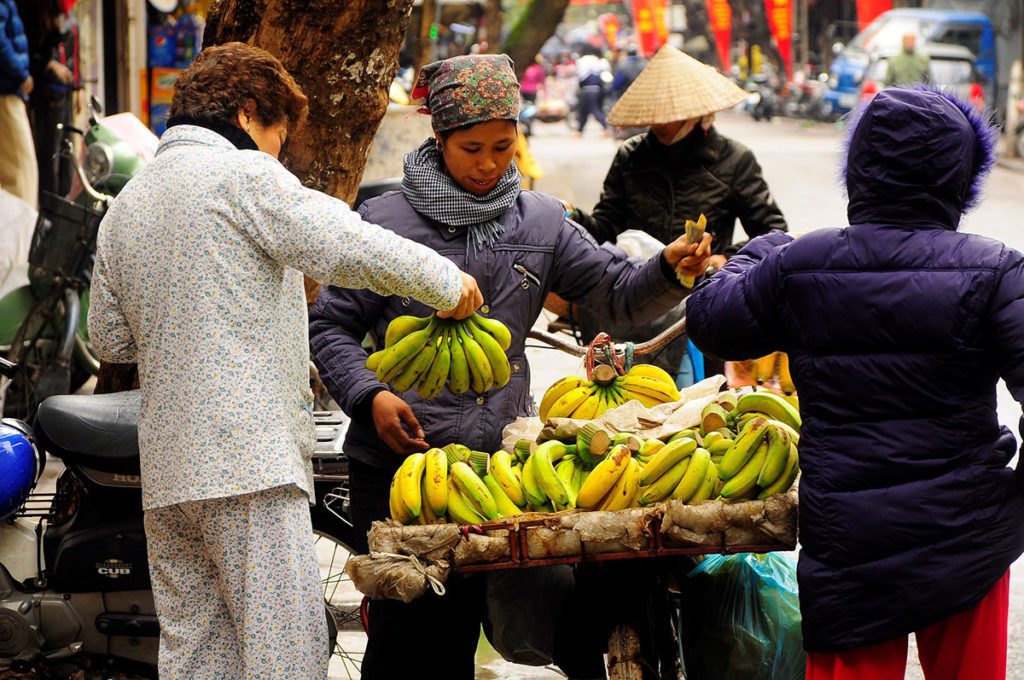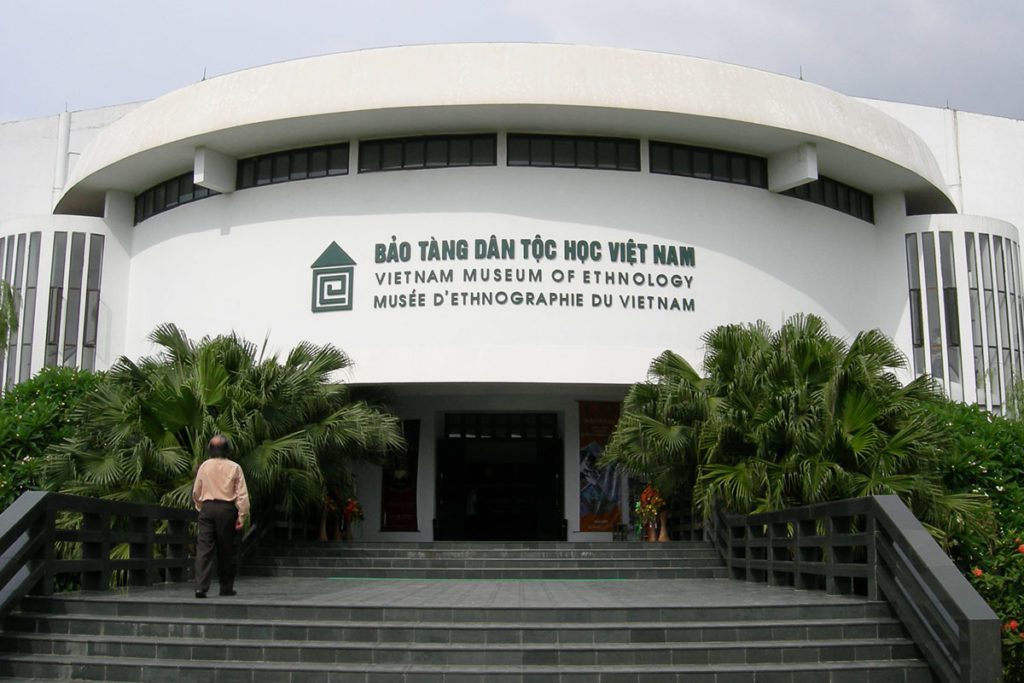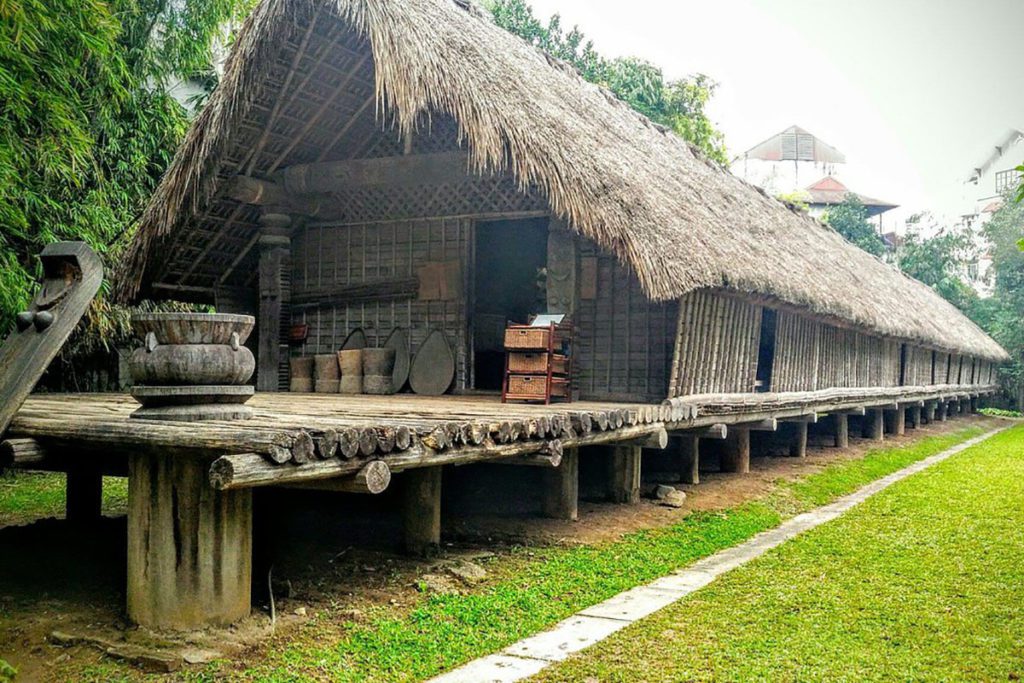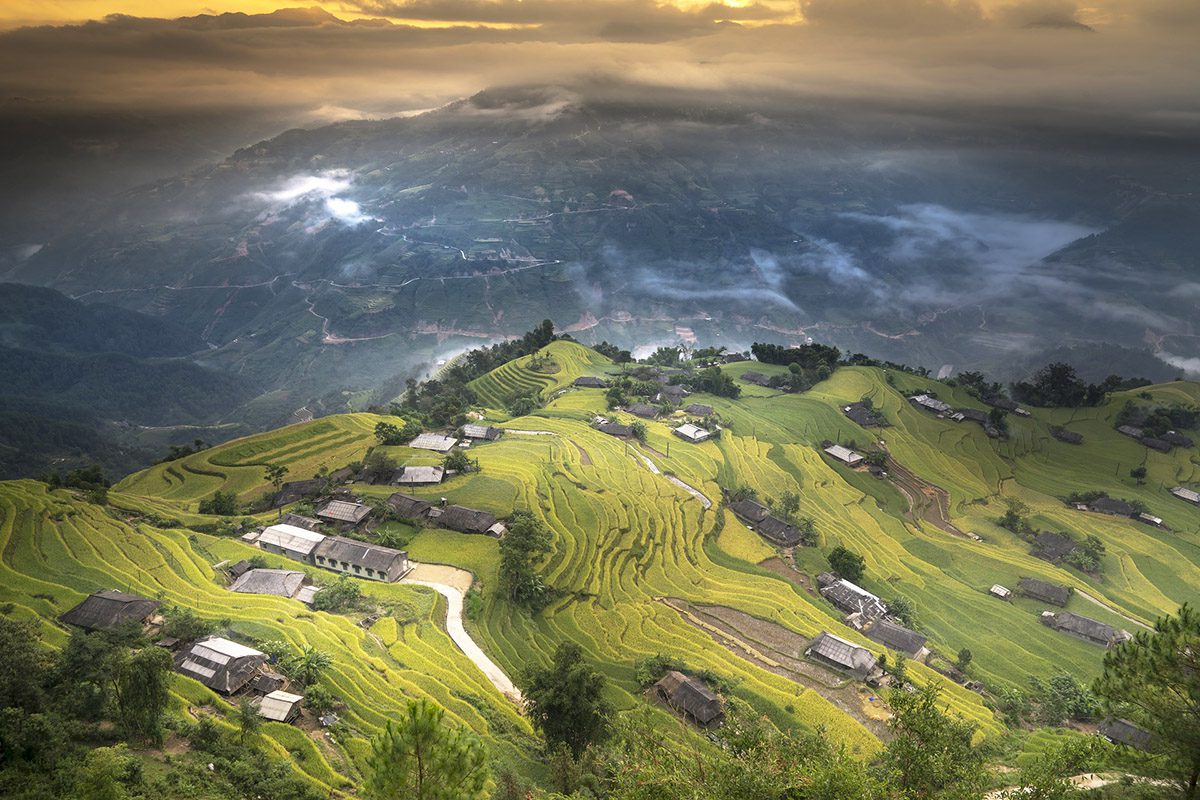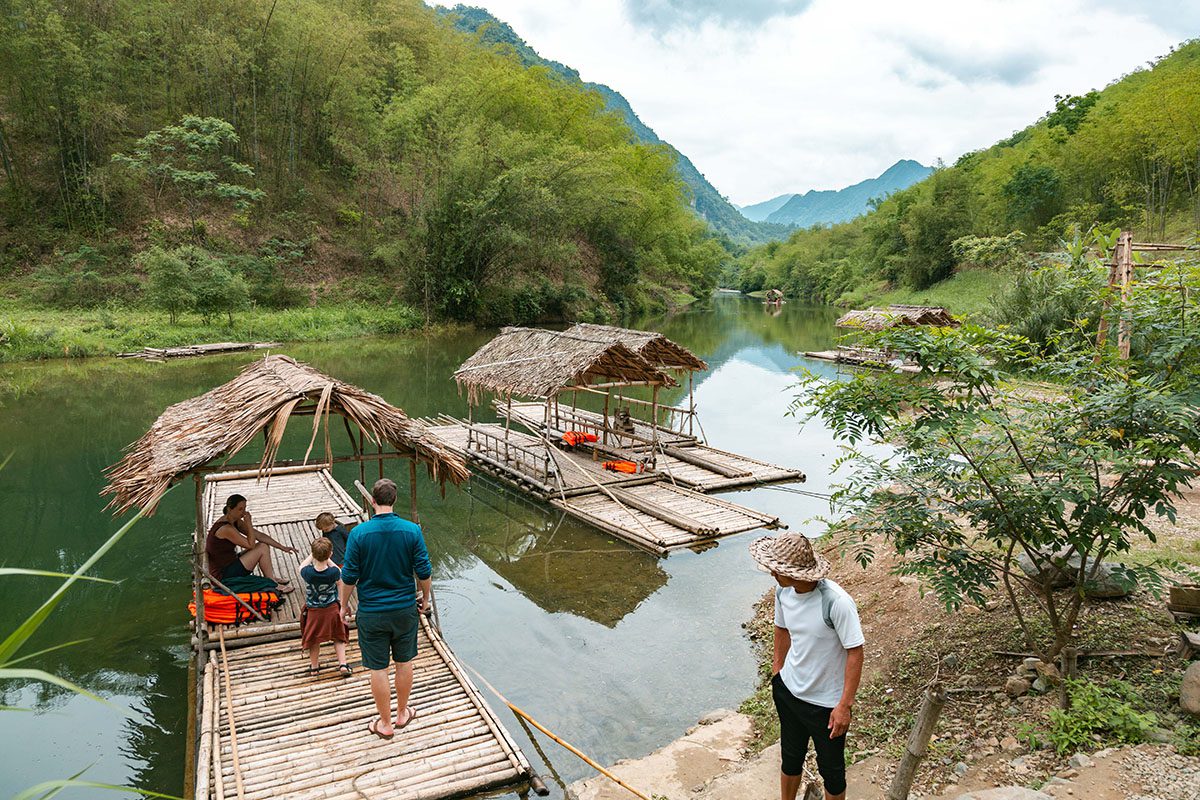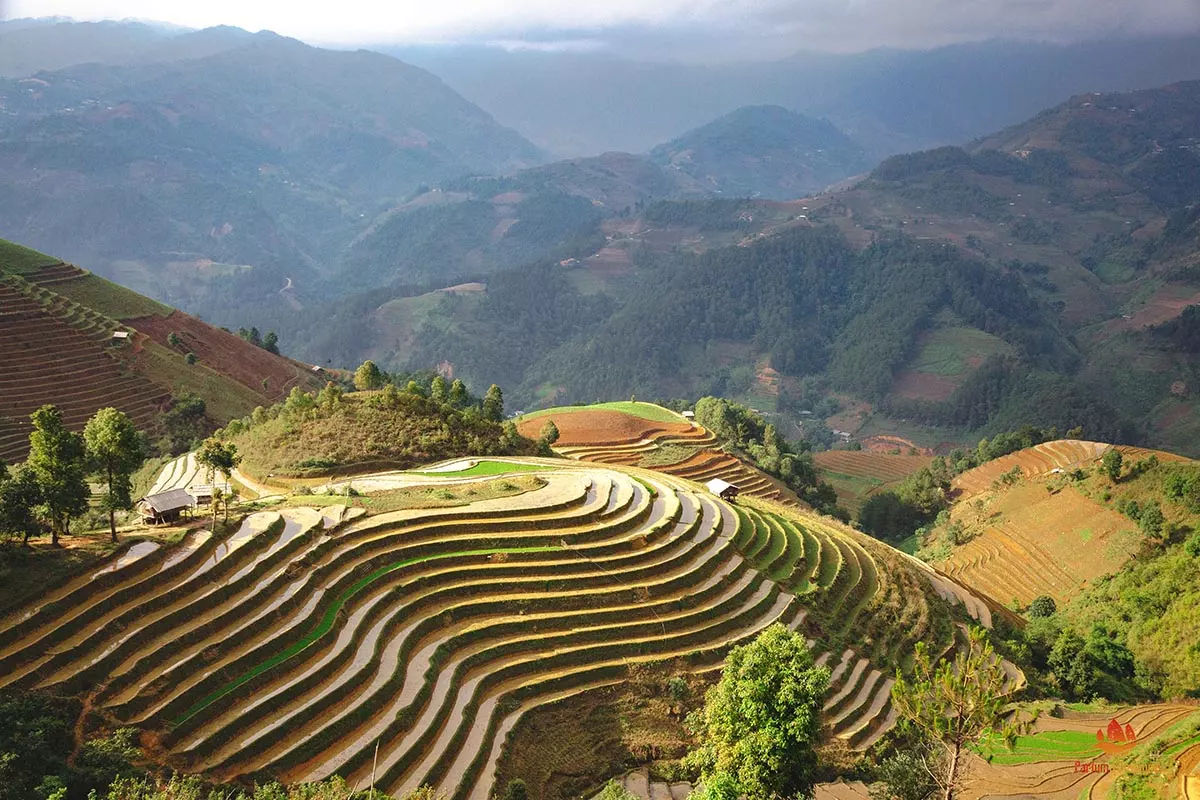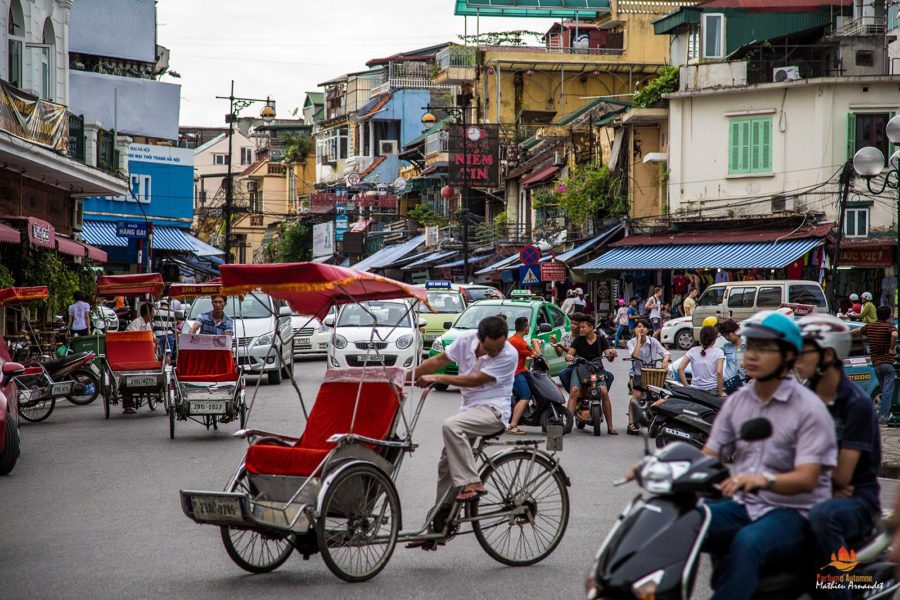
Must-see attractions of Hanoi, capital of Vietnam
Hanoi, the capital of Vietnam, is the cultural heart of the country. Its picturesque alleys, historic landmarks, and vibrant atmosphere come together to create an iconic destination for exploration. Explore the must-see attractions in Hanoi in this article.
Contact us to arrange an amazing trip to Vietnam.
Table des matières de l'article
Historical and cultural values
Hanoi, much more than just a city, is the pulsating heart of Vietnamese history. The footprints of the past mark places like the Ho Chi Minh Mausoleum and the Temple of Literature, bearing witness to the country’s rich heritage. The vibrant culture, colorful festivals, and warm hospitality of the locals illustrate the vitality of this historic city. Every corner of Hanoi unveils a story, every moment brings you closer to the soul of Vietnam, creating an unforgettable experience that reveals the deep layers of local culture.
Let’s explore together the absolute must-see places during your stay in Hanoi.
Hanoi old quarter: a dive into history
The captivating history of the Old Quarter
The Old Quarter of Hanoi is located in the northeast of the capital and belongs to the Hoan Kiem District. The location of the old town was strategically chosen between the imperial citadel and the Red River, considered an advantageous area for commercial development.
The history of the Old Quarter dates back to the 11th century when King Ly Thai To decided to move the capital from Hoa Lu (Ninh Binh) to Hanoi. It was from the 13th century that Hanoi began to attract artisans from neighboring regions who soon organized themselves into craft cooperatives and guilds. From that point on, the inhabitants of each village gathered and operated on the same street, giving each of them the homogeneous appearance that is still evident today.
The 36 streets and the colonial villas
The streets of the Old Quarter breathe ancient memories. The narrow houses with weathered yellow facades bear witness to a time when traditional Vietnamese architecture harmoniously intertwined with the French colonial heritage. Wandering through these picturesque alleyways, under the intertwined electrical wires, captivates and immerses one in the heart of Hanoi’s soul.
Old quarter street life, Vietnam. Crédit : Mathieu Arnaudet
Simply grab a map of the Hanoi city center, and you’re ready for a stroll in the Old Quarter! Many libraries, bookstores, and art galleries are just a few meters away from Hoan Kiem Lake, and you won’t have any trouble getting one.
Tourist map of Hanoi.
We recommend using the large fountain in Dong Kinh Nghia Thuc Square, which is located around Hoan Kiem Lake, as a landmark. It’s from there that you’ll delve deep into the network of alleys and streets and become part of the bustling traffic unique to Hanoi. Here and there, you can spot old houses that bear witness to the glorious days of the most active and prosperous commercial area in Vietnam.
Here are some streets (and their specialties) worth exploring:
Hang Gai: silk, tailor-made clothing
Hang Ma: traditional votive papers, which now come in various colors for major celebrations (Vietnamese New Year, Mid-Autumn Festival, Christmas, and even Halloween!).
Hang Bac: shops selling silverware, jewelry, and various accessories
Hang Duong: stores with sugar, candies, and O mai (sweet and spicy dried fruits)
Ta Hien: cafes, terraces, beer, and street food – a crowded spot on weekends during good weather!
Ta Hien street during day time. Crédit photo : Mathieu Arnaudet
Dong Xuan old indoor market
Dong Xuan Market, vibrant and lively, emerges as the bustling center of commerce in the Old Quarter. Across several floors, this market dazzles with products ranging from traditional clothing to modern gadgets. The stalls overflow with local treasures, exotic spices, and fine craftsmanship, providing a unique window into the hectic life of the locals.
Clothes shops in Dong Xuan indoor market. Crédit : Mathieu Arnaudet
Every corner of the Old Quarter weaves the complex and rich narrative of Hanoi, where age-old traditions blend with the effervescent pace of contemporary life. Strolling through this iconic neighborhood transports you to the heart of the past while connecting you to the vibrant present of the city.
Hoan Kiem lake and Thê Húc Bridge
Folk stories about Hoan Kiem lake
Hoan Kiem Lake, also known as the “Lake of the Returned Sword,” is shrouded in enchanting legends that captivate the imagination of visitors. According to the most famous legend, Emperor Lê Lợi received a magical sword from a celestial turtle to help him repel Chinese invaders. After his victory, the emperor was invited by the turtle to return the sword to the lake, thus marking the birth of the story of Hoan Kiem Lake and its mystical charm.
Walking over Thê Húc Bridge
Thê Huc Bridge is a picturesque footbridge that connects Hoan Kiem Lake to Jade Island. A morning stroll on this bridge provides an exceptional experience as the sun rises gently, bathing the lake in golden light. The panoramic view of the lake, with Ngoc Son Temple in the background, creates a memorable image that captures the tranquil beauty of Hanoi.
Thue Huc bridge over Hoan Kiem lake at night fall.
Ngoc Son temple on Jade Island
Accessible via the Thue Huc Bridge, Ngoc Son Temple majestically rests on Jade Island in the heart of Hoan Kiem Lake. This temple, dedicated to the worship of General Tran Hung Dao, who played a crucial role in defending the country against Mongol invaders, is a captivating example of Vietnamese architecture. The scent of incense and the sacred atmosphere create a space of serenity where visitors can pay their respects and connect with the spirituality of Vietnam.
Ngoc Son temple on Jade island, Hoan Kiem, Hanoi
Hoan Kiem Lake and Thue Huc Bridge are more than just a landscape; they are places steeped in mystery and symbolism that evoke ancient tales of Vietnam. As you stroll along its shores, visit the sacred temple, and gaze at the sunrise from the bridge, you immerse yourself in an experience that blends nature, spirituality, and history, creating unforgettable memories of your journey in Hanoi.
Thang Long water puppet show
An ancient artistic tradition
The Thang Long water puppet show immerses spectators in an artistic tradition that dates back several centuries. Originating from the flooded rice fields of Northern Vietnam, this captivating art form has its roots in local beliefs and customs. Passed down from generation to generation, water puppetry has become a true cultural treasure that embodies the creative spirit and deep connection between the Vietnamese people and water.
Captivating show
Attend a water puppet show, and you’ll be mesmerized by the magic that comes to life on the stage. Skillful puppeteers manipulate colorful figurines that appear to glide gracefully on the water, narrating folkloric and historical tales. The synchronized movements of the puppets, accompanied by traditional music and songs, create a captivating experience that transports the audience into a world of legends and enchanting stories.
Water puppet show
In the backstage
For an even more enriching experience, explore behind the scenes of the Thang Long Theater to discover the meticulous work that goes into every performance. Meet the passionate artists who dedicate their lives to preserving this exceptional tradition. You will have the opportunity to learn more about puppet manipulation techniques, elaborate costumes, and the narratives that come to life on stage. This behind-the-scenes immersion adds a deeper dimension to your understanding of the art of water puppetry.
The puppeteers greet the audience.
By attending a Thang Long water puppet show, you not only immerse yourself in a unique form of art but also connect with the living cultural heritage of Vietnam. It’s an experience that transcends time and borders, allowing you to feel the emotion and creativity that have defined the country for centuries.
Hô Chi Minh mausoleum and Memorial complex
Tribute to the Vietnamese revolutionary leader
The Ho Chi Minh Mausoleum is a testament to the deep respect of the Vietnamese people for their revolutionary leader, Ho Chi Minh. Built to house his preserved body, this sacred shrine evokes the powerful legacy of the man who guided Vietnam to independence. Visitors flock to pay tribute, creating an atmosphere of reverence and gratitude.
Ho Chi Minh Mausoleum, Ba Dinh square. Crédit : Mathieu Arnaudet
Unique architecture and cultural symbols
The architecture of the Ho Chi Minh Mausoleum blends Vietnamese and Soviet styles, reflecting revolutionary ideals and cultural fusion. The clean lines and simplicity of the mausoleum recall Ho Chi Minh’s humility while imbuing it with impressive grandeur. Cultural symbols in the vicinity, such as the stilt house and the lotus pagoda, add a spiritual dimension to this historically rich place.
Gardens and buildings
The Memorial Complex extends beyond the Mausoleum, encompassing lush gardens and significant buildings. The tranquil gardens offer respite from the city’s hustle and bustle, providing a place for reflection to contemplate Hô Chi Minh’s legacy and his impact on modern Vietnam. Adjacent buildings like the Presidential Palace and the Stilt House illuminate the life and ideals of the revolutionary leader.
Presidential palace from the gardens, Hanoi. Credit : Mathieu Arnaudet
Exploring the Ho Chi Minh Mausoleum and the Memorial Complex immerses visitors in the fascinating history of Vietnam and allows them to feel the deep attachment of the people to their leader. This sacred place embodies the essence of Vietnamese determination for independence and provides an opportunity for reflection on the values and sacrifices that have shaped the present country.
One Pillar Pagoda: elegance and spirituality
Unique lotus-shaped architecture
La Pagode au Pilier Unique, ou Chùa Một Cột en vietnamien, est une merveille architecturale qui fascine par sa conception distinctive en forme de lotus en épanouissement. Construite au XIe siècle, cette pagode est un exemple éblouissant de l’ingéniosité vietnamienne et de l’art de la construction. La structure élégante, soutenue par un unique pilier de pierre, semble flotter au-dessus d’un bassin, créant une image à la fois majestueuse et délicate.
One Pillar Pagoda, Vietnam
Spiritual and religious significance
The One Pillar Pagoda is imbued with spiritual and religious depth for the Vietnamese. It is dedicated to the goddess Quan Yin, a symbol of compassion and kindness. Visitors flock to this sacred place to make offerings and light incense sticks, seeking blessings and spiritual solace. The atmosphere, filled with devotion and reverence, envelops you as soon as you step through the pagoda’s gates.
Guided visit of the pagoda and surrounding
During a guided tour of the One Pillar Pagoda, you will delve into the fascinating history of this iconic structure. Your guide will unveil the architectural details and explain the customs and beliefs associated with it. You will have the opportunity to admire the delicate sculptures, elegant frescoes, and ancient inscriptions adorning the pagoda. While exploring the surroundings, you will also discover peaceful gardens and sacred buildings that will enrich your understanding of Vietnamese spirituality.
Temple of Literature : guardian of knowledge
First university of Vietnam
The Temple of Literature, built in 1070, shines as a historic and educational beacon for Vietnam. As the country’s first university, it was dedicated to teaching philosophy, literature, and the arts. Walking through its pathways is to tread upon the same stones that generations of diligent students walked on, reminding us of the centuries-old significance of education in Vietnamese culture.
Temple of Literature, Hanoi, Vietnam
Traditional Vietnamese architecture and peaceful gardens
The architecture of the Temple of Literature embodies the elegance and aesthetics of traditional Vietnamese art. Sloping roofs, intricately carved doors, and peaceful inner courtyards showcase meticulous attention to detail. Tranquil gardens adorned with stone basins and sculptures create a serene atmosphere conducive to meditation and contemplation.
Gardens of the Temple of Literature, Hanoi, Vietnam
Promoting a culture of education and learning
The Temple of Literature, beyond its past, continues to serve as a promoter of educational culture. Stone steles engraved with the names of graduates reflect Vietnam’s pride in scholarship. Ceremonies are still held there to honor deserving students, perpetuating the importance of knowledge in Vietnamese society.
Visiting the Temple of Literature, you enter a sanctuary of learning, where the Vietnamese educational heritage is celebrated and preserved. It’s a place where the past and present come together, reminding us that education is the foundation of a prosperous nation and that the thirst for knowledge is a precious legacy to pass on to future generations.
Railway discovery in Hanoi: train street and Long Bien bridge
Train street and its coffee shops
Immerse yourself in the heart of Hanoi’s daily life by exploring Train Street, where the railway tracks literally intersect urban living. Imagine being just steps away from the train tracks, watching trains pass by just inches from you, all while observing residents going about their activities nearby. This remarkable scene provides a captivating glimpse into the city’s energy and dynamic rhythm. The charming cafes lining the railway invite you to mingle with the locals, share laughter, and engage in warm conversations. It’s a unique opportunity to meet local residents, discover their daily life, and immerse yourself in Vietnamese hospitality.
Train street in Hanoi.
Long Bien : geographic and cultural bridge
Long Bien Bridge, a historical icon of Hanoi, goes beyond its role as a river crossing. Built during the French colonial period, this iconic bridge has witnessed Vietnam’s tumultuous history. By walking on its railway tracks, you follow in the footsteps of past generations and feel the timeless connection between the past and the present. The magnificent panoramas it offers of the river and the city provide a captivating window into Hanoi’s duality, where ancient traditions and modernity harmoniously intertwine.
Our tip: go and admire the bridge from the terrace of the Serein Cafe Lounge.
View point over the bridge from Serein Cafe Lounge. Credit : Mathieu Arnaudet
Immersing yourself in the daily life of Hanoi, whether it’s on the Train Street and the cafes along the railway or crossing the Long Bien Bridge, is an invitation to understand the true soul of this city. These experiences allow you to connect with the locals, feel the dynamics of urban life, and contemplate Vietnam’s living history. It’s these authentic moments that make a trip to Hanoi a memorable and enriching adventure.
Food discovery in the local markets
Night market of Hanoi
Hanoi’s night market is an explosion of flavors, colors, and aromas that awaken all your senses. As night falls, the stalls come to life and offer an incredible variety of local dishes and products. The alleys sparkle with lights, and the ambient music adds a festive atmosphere to the lively market. It’s a true visual and culinary feast where you can experience Vietnamese cuisine at its best.
Marché de nuit de Hanoi
Tasting authentic vietnamese street food
The street food stalls at the market invite you to venture into the delectable world of Vietnamese cuisine. From steaming pho to crispy banh mi, and delicious grilled skewers, every corner of the market provides a new opportunity to taste authentic Vietnamese delights. Bold flavors and fresh ingredient combinations create an unforgettable culinary experience that will delight your taste buds.
Pho, the Vietnamese iconic soup of North Vietnam
Meet local vendors
Exploring the local markets is also a unique opportunity to meet passionate vendors who bring their craftsmanship and products to life. Chatting with the merchants will help you better understand the traditional methods of food preparation and the importance of fresh ingredients in Vietnamese cuisine. You may even have the chance to learn some culinary tips directly from the local experts.
Street vendor in Hanoi
Venturing into Hanoi’s local markets will immerse you in the soul of Vietnamese cuisine and introduce you to the vitality of the city’s food culture. Every bite will bring you closer to ancient traditions and provide an authentic glimpse into the daily life of the locals. A culinary exploration is more than just a meal; it’s a sensory and cultural experience that will leave you with lasting taste memories.
Vietnam Museum of Ethnology : discovering the Vietnam cultural mosaic
A beautiful collection of ethnic artifacts
Let’s conclude this list with an outlying but must-visit museum. The Vietnam Museum of Ethnology offers a fascinating immersion into the richness and diversity of the country’s cultures. Its comprehensive collection of cultural and ethnic artifacts, meticulously gathered, reflects the numerous ethnic groups inhabiting Vietnam. From traditional costumes to musical instruments to ritual objects, each item tells a unique story and provides a deeply captivating glimpse into the daily life and beliefs of various communities.
Entrance of Vietnam Museum of Ethnology
Educational exhibition
The exhibitions at the Vietnam Museum of Ethnology captivate visitors of all generations. Living dioramas, faithful reconstructions, and multimedia presentations allow visitors to literally immerse themselves in the way of life of Vietnamese ethnic groups. Educational activities stimulate learning by providing a hands-on experience that connects you directly with the traditions and customs of these communities. You will also find reproductions of dwellings in the museum’s gardens.
Reconstitution maison traditionnelle, Musée ethnologie de Hanoi
Understanding ethnic traditions
The Vietnam Museum of Ethnology allows you to travel through the highlands, coastal regions, and vast plains of the country, uncovering the unique ways of life in different regions. You will gain a better understanding of traditional craftsmanship, festive celebrations, belief systems, and agricultural methods that have shaped these communities over the centuries. This immersive experience provides a deep appreciation for the cultural richness and diversity that characterize Vietnam.
By exploring the Vietnam Museum of Ethnology, you open a window into the many facets of the country and its people. You will leave the museum with an enriched understanding of the complexity and depth of Vietnamese culture, as well as a newfound appreciation for the various forms of expression and lifestyles that make Vietnam a unique cultural kaleidoscope. We recommend visiting it before your departure for the Northern mountains, where you will encounter some ethnic groups.
As we’ve journeyed through this article, we’ve discovered a captivating array of sites and experiences that make Hanoi an unforgettable destination. From the elegant architecture of the Temple of Literature to the sensory immersion in local markets, from the enchantment of water puppetry to the exploration of daily life along the railway tracks, every step of our journey has brought us closer to the rich culture and vibrant history of the Vietnamese capital.
Hanoi is much more than a travel destination; it’s a plunge into the past and a deep immersion into contemporary life in Vietnam. Every street, every monument, and every interaction serve as windows into the customs, traditions, and values of the country. Exploring its hidden corners, architectural treasures, and culinary delights creates a rewarding experience that turns every traveler into a curious explorer.
If you dream of delving into the soul of Southeast Asia, Hanoi is the perfect place to start your adventure. The must-visit attractions we’ve explored here are just the beginning of a broader and deeper exploration of this captivating city. By planning your trip to Hanoi with us, you’ll have the opportunity to create lasting memories, broaden your cultural horizons, and connect with a dynamic and welcoming community.
Whether you’re fascinated by ancient history, eager to taste new flavors, or hungry for authentic encounters with locals, Hanoi offers an infinite range of possibilities. So, get ready to explore this fascinating city, let its beauty soak into you, and embark on an adventure that will leave an indelible mark on your heart and mind.
Contact us to arrange your authentic journey in Vietnam.
[/vc_column_text][/vc_column][/vc_row]

